
Millet production in India is among the largest, and bajra is one of the most popularly cultivated millet. Different states cultivate different varieties of bajra in India based on their nutritional value and suitable climatic conditions. These states are primarily responsible for most of the country's bajra production, covering over 97 per cent of the total output.
Table of Contents
Agriculture plays a major role in India's food security and economic growth. While India is the largest producer of various vegetables and fruits, the country is also among the leading millet producers. Different states cultivate different types of millet in India based on climatic conditions and nutritional value, and bajra is one of them, making a significant part of all the cultivated millet. This blog discusses the top 10 bajra producing states in India.
Bajra Production in India
Bajra is also called the Pearl millet or Pennisetum glaucoma crop. The edible seed present in the pearl millet plant is specifically referred to as bajra. It is one of the major crops in India and grows in different colors, such as grey, yellow and white. It is a coarse grain widely consumed in India, specifically as roti. Bajra is rich in iron, fiber and protein, making it a highly beneficial grain with health benefits. The consumption of bajra helps alleviate cardiovascular, diabetes and digestive problems. Farmers are increasingly looking for a guide on Bajra Farming in India to benefit from this versatile crop. In India, various bajra varieties are cultivated, varying from region to region. Some of the varieties of bajra cultivated are hirwa bajra, brown and white bajra, sirohi, chironji and kali khand. Among these, hirwa bajra is the one majorly cultivated for consumption purposes.
Top 10 Bajra Producing States in India
When the question arises of where bajra is grown in India, the answer is no specific region but the whole country. India has different terrains and climatic settings, which means that the bajra cultivation is widespread, and the bajra yield per acre is also different in these regions. Bajra crop cultivation in India covered an area of 70.08 lakh hectare. The total production was around 95.31 lakh tonnes, yielding 1360 kg per hectare. Rajasthan is among the leading producers of bajra in India followed by other states. It is grown in the summer season in some states and the rainy season in others, depending on the suitable conditions.
Rajasthan
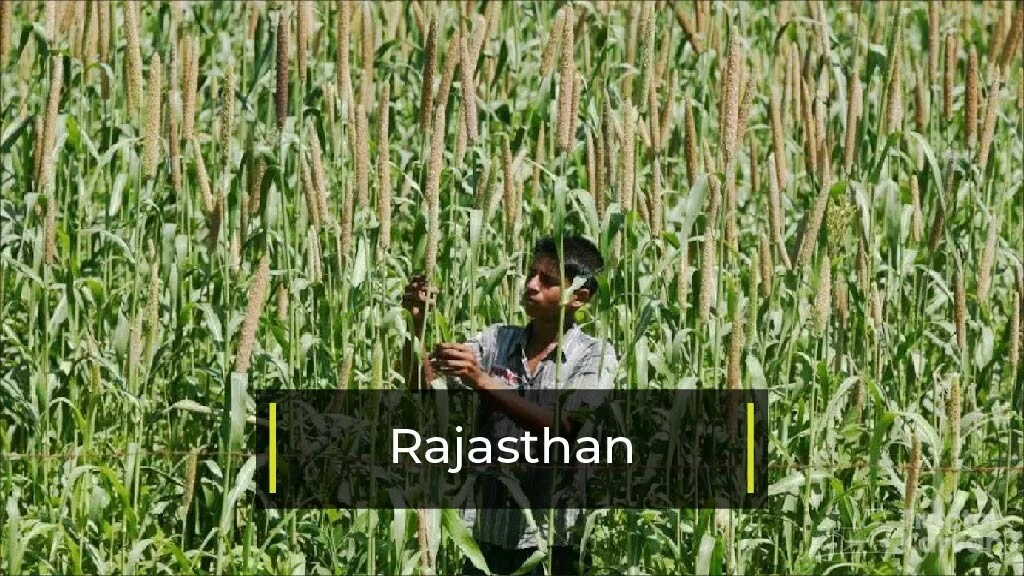
Rajasthan ranks as the top player in the country in terms of bajra cultivation and produced 42.81 lakh tonnes of bajra. This high yield accounts for almost 31.3 per cent of the total national bajra production. The climatic conditions and the state's soil are most suitable for cultivating bajra varieties like ICMH-356 and HHB-67-2, thus making it the leader in bajra cultivation.
Uttar Pradesh
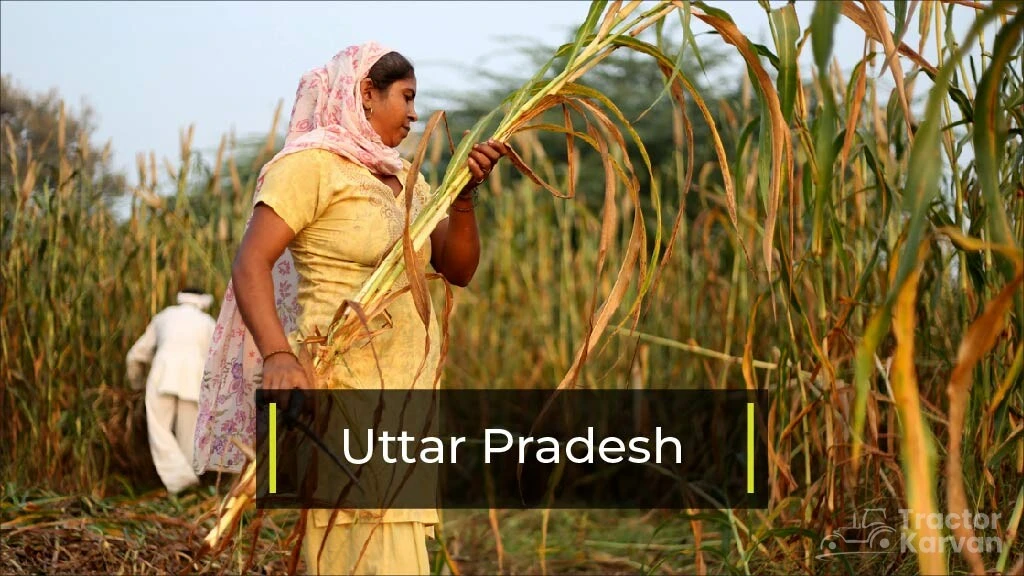
Uttar Pradesh is second in pearl millet production in India after Rajasthan. The state produced 21.95 lakh tonnes, making 18 per cent of the nation's total bajra production. The crop is among the top in terms of cultivation area after wheat, rice and corn. The cultivation in the regions with less rainfall suits the crop. Bajra varieties like Nandi-32 and Nandi-52 are cultivated majorly in the regions of Kanpur, Bareilly and Agra during the Rabi season and Jawahar Bajra Variety-2 and Pusa composite-383 during the Kharif season.
Haryana
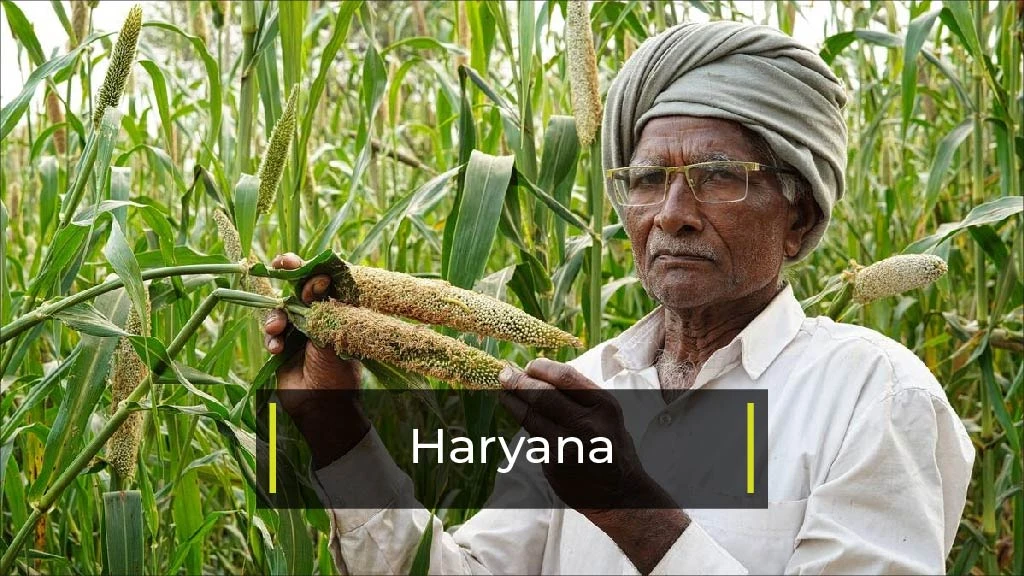
With 11.69 lakh tonnes of bajra production, Haryana is the third leading bajra producer in the country. The major contributing regions in the state are Hisar, Mahendragarh, Rohtak, Gurgaon, Jhajjar, Rewari, and Bhiwani. Among the various bajra varieties, HHB-67-2 and HHB-94 are popular varieties cultivated in the state during the kharif season.
Madhya Pradesh
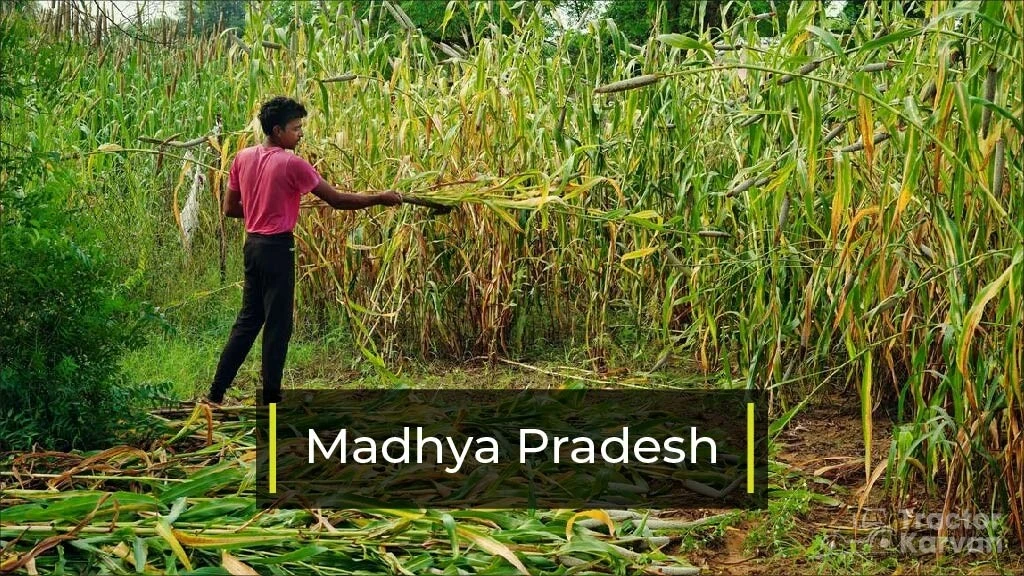
The state stands among the top four bajra producers with a production of 9.58 lakh tonnes. Sheopur, Gwalior, Bhind, and Morena are some of the regions where the majority of the state's bajra cultivation is executed. Among many varieties, some commonly cultivated bajra varieties are Nandi-52, RHB-58 and Pusa-444.
Gujarat
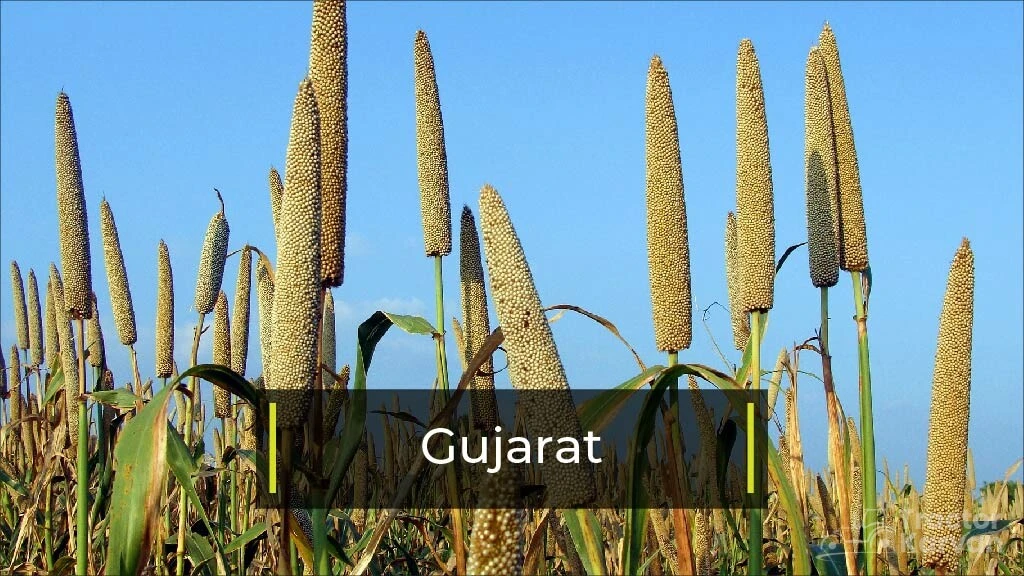
Gujarat produced 3.63 lakh tonnes of bajra in the year. Bajra is the primarily grown millet in the state, and the soft and sandy soil of the state offers a suitable environment. It is cultivated in three different seasons in the state: summer, kharif and semi-rabi, which is late Kharif. Ahmedabad, Banaskantha, Gandhinagar, Anand, and Bhavnagar are a few regions where the crop is majorly cultivated using GHB-526, GHB-538 and GHB-558 varieties, among others.
Maharashtra
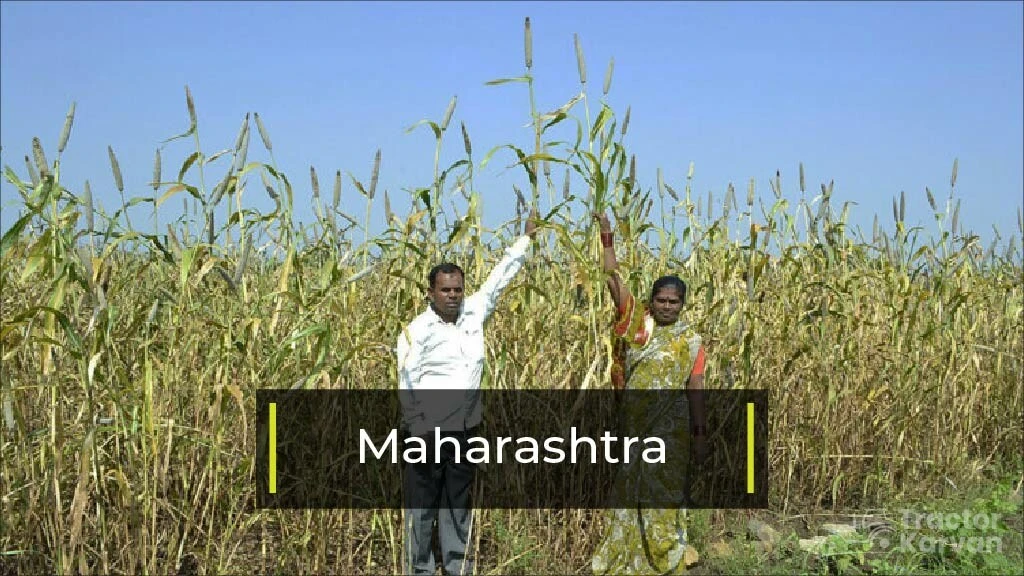
With its bajra production of 2.01 lakh tonnes, Maharashtra ranks sixth. The state is significantly involved in bajra cultivation by producing different bajra varieties like Pratibha, ICTP-8203, Sharadha, and Saburi are cultivated during Kharif and Rabi seasons in the regions of Ahmednagar, Sangli, Nashik, Solapur, Dhule, Pune, Aurangabad, Satara and Jalgaon.
Karnataka

Karnataka produced 1.56 lakh tonnes of bajra in the year. The state cultivates several varieties of bajra for different seasons, like Pusa composite – 612, RHB-58 in the Kharif season, GHB-526 in the Rabi season, GK-1004 and Nandi-35 during the summer season.
Tamil Nadu
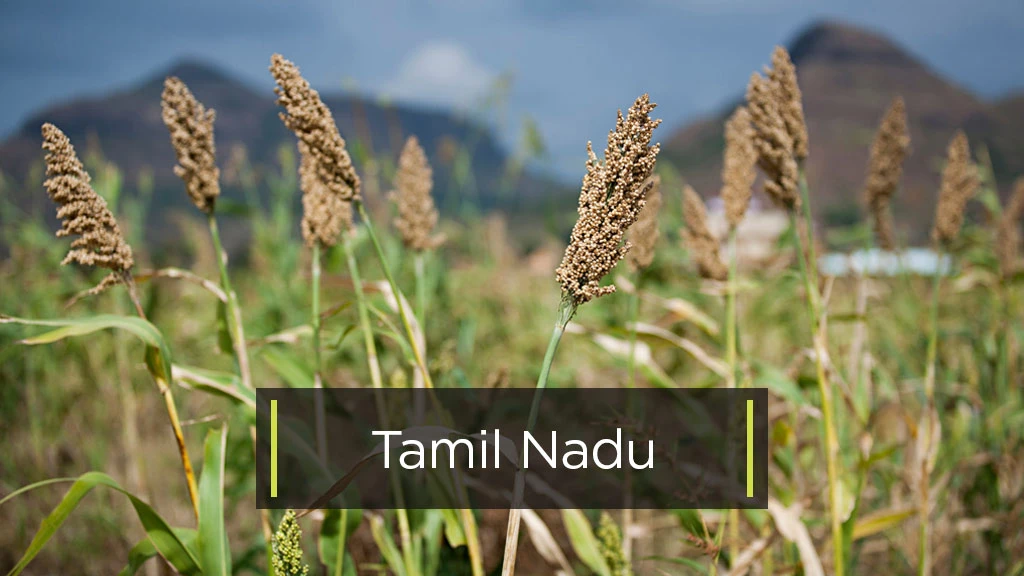
The state produced 1.19 lakh tonnes, yielding 2578 kg per hectare. The state also cultivates several bajra varieties, among which the popular ones are Co Cu-9 and ICMV-221 during the Kharif and the Rabi season.
Andhra Pradesh
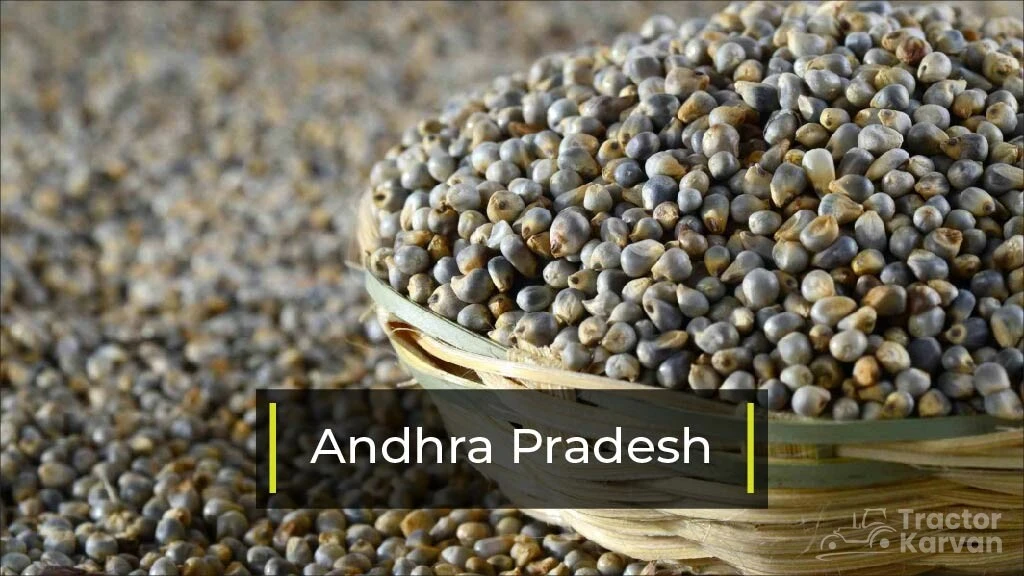
Bajra production in the state is performed in different seasons with different varieties, such as WCC-75 and ICMH-451 during the Kharif, the Rabi, and the summer season. This wide variety of bajra cultivation helped the state produce 0.54 lakh tonnes of bajra, yielding 2252 kg per hectare.
Telangana
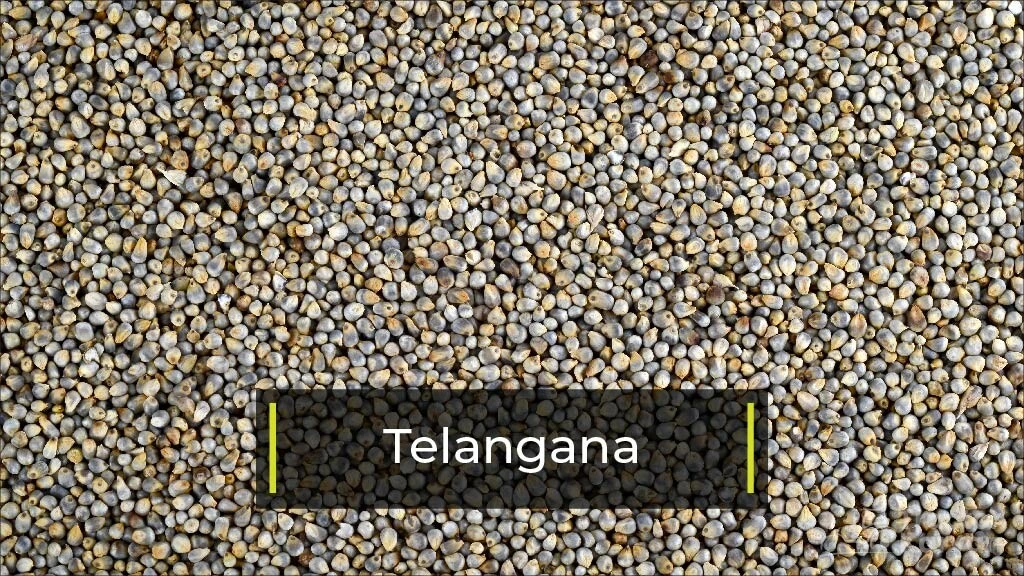
Telangana is the last entry to the list of the top ten bajra producing states and it produced 0.11 lakh tonnes of bajra. Different hybrid bajra varieties, such as NBH 4903, PBH 306 and AHB 1200, are cultivated in the state. The list of India's top ten bajra producing states shows how bajra plays a crucial role in the Indian agricultural sector. With different states involved in cultivating and producing diverse varieties, the nation's food security is ensured. In addition to this, the health benefits associated with bajra cannot be ignored, and they can only be enhanced by developing and using hybrid varieties.
Frequently Asked Questions On Top 10 Bajra Producing States in India 2025
1. What is the cultivation method of bajra
Bajra can be cultivated in ridge and furrow systems, on flat surfaces, or in a broad bed and furrow system with a sowing depth of around 2.5 cm to 3 cm.
2. Which state is the largest producer of bajra in India?
Rajasthan is the largest producer of bajra in India.
3. Who is the king of millets?
Sorghum millet is the king of millet.
4. Who is known as the millet man of India?
Dr. Khader Vali is known as the millet man of India.
5. Which millet is highest in protein?
Foxtail millet is the millet with the highest protein.
6. Which millet has the highest fibre?
Finger millet has the highest dietary fibre, with 11.24g/100g.


Related Blogs












